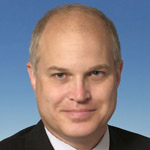Air quality
The challenge is furthered in the effort to maintain ‘acceptable’ air quality, while not impacting the facility’s availability. The definition of ‘acceptable’ is vague as there is no quantitative assay readily available. USA Swimming, for example, leans toward installing ultraviolet (UV) systems to eliminate chloramines in the water before they can become airborne. Ozone systems can also be used to improve both water and air quality.
Although this capital intensive approach may work daily, partial water replacement is also an option. The late Neil Lowry, PhD, who was a regular contributor to Pool & Spa Marketing, was a big proponent of daily water replacement and contributed to Ontario’s regulations for public spas, which mandates the addition of “make-up water during each operating day in an amount not less than 20 L (5.3 gal) per bather.” This, of course, requires balanced fill water. Another budget-friendly approach is using potassium monopersulfate (MPS) (i.e. non-chlorine shock oxidizer) to pre-emptively oxidize organic compounds before they form DBPs.
Each of these methods has been used successfully—both independently and in combination; the only limitations are the operator’s skill and budget. However, once DBPs become airborne, they must be either exhausted to the outside or absorbed by an activated carbon filter in the facility’s heating, ventilation, and air conditioning (HVAC) system.
Proper air circulation is just as vital as proper water circulation. Even with 100 per cent hourly air replacement, the air quality can be poor if the vent placement produces stagnant air. In fact, many facility operators routinely schedule facility downtime—before and after scheduled groups—to make any necessary water chemistry adjustments, particularly after the heavy use, which occurs during swim meets.
| FACILITY MAINTENANCE: USING LAYERS OF PROTECTION |
|---|
| To ensure sparkling pool water and indoor air free of chloramines, Sam Fruia, a Certified Pool/Spa Operator® (CPO®) and National Swimming Pool Foundation (NSPF®) Instructor (NSPF®I), who operates the Conroe Independent School District’s (CISD’s) natatorium, uses a ‘layers of protection’ approach to keep both as clean as possible. The CISD natatorium, located 50 km (30 miles) north of Houston, Texas, is just shy of 3,785,411 L (1 million gal.). Fruia is a self-proclaimed believer in finding better use of resources that do not require bigger budgets; his layers of protection include:
|
Understanding RWIs
With the increased understanding of RWIs, the industry now recognizes that aquatic facilities are major conduits for the spread of Crypto through both swimming and the general community. One of the most difficult challenges facility operators face is convincing coaches that ill team members must not be allowed to enter the pool/swim until at least seven days after their symptoms have ended. One reason for this is infected bathers can continue to shed oocysts for up to two weeks after diarrhea has stopped.

It is not known how many Crypto outbreaks have occurred at various swim meets; however, one occurrence was documented in 2008 at a facility in New Mexico. In this case, at least one competitive swimmer continued to practice while ill with diarrhea. During the state and city championship meets, 640 other athletes were exposed and at least 92 (14.3 per cent) became ill. These newly infected athletes then went on to potentially contaminated 25 other pools and one waterpark.
Crypto is the only infectious RWI that is not readily killed by chlorine. And, even though an outbreak can occur at any time, there are no special disinfection requirements for Olympic competitive facilities. The current draft disinfection module of the Centers for Disease Control’s (CDC’s) Model Aquatic Health Code (MAHC) does not classify competitive pools as an ‘increased risk facility,’ and therefore they are not required to install a supplement disinfection system (e.g. UV, ozone, or enhanced filtration) to control Crypto. Even if a facility employs a supplemental disinfection system there is still a window of infection, which extends many hours after a fecal accident. The only absolute way to prevent Crypto outbreaks during a swim meet is to keep infected athletes out of the water.
While Olympic-sized competition pools may present a disproportionate complexity in management, its cleanliness is only limited by the skill, resourcefulness, and leadership of the lead operator.
 Roy D. Vore, PhD, is the senior aquatics consultant for Vore & Associates, LLC, a consulting firm specializing in public health, recreational water illness (RWI) management, and water chemistry and regulatory issues in Wilmington, Del. He is a Certified Pool/Spa Operator® (CPO®) and a CPO® Instructor through the National Swimming Pool Foundation (NSPF®). Vore is the lead author on the NSPF’s Recreational Water Illness manual, published June 2012 and is a contributor to the Centers for Disease Control and Prevention’s (CDC’s) Model Aquatic Health Code (MAHC). He can be reached via e-mail at roy.d.vore@gmail.com.
Roy D. Vore, PhD, is the senior aquatics consultant for Vore & Associates, LLC, a consulting firm specializing in public health, recreational water illness (RWI) management, and water chemistry and regulatory issues in Wilmington, Del. He is a Certified Pool/Spa Operator® (CPO®) and a CPO® Instructor through the National Swimming Pool Foundation (NSPF®). Vore is the lead author on the NSPF’s Recreational Water Illness manual, published June 2012 and is a contributor to the Centers for Disease Control and Prevention’s (CDC’s) Model Aquatic Health Code (MAHC). He can be reached via e-mail at roy.d.vore@gmail.com.







I love the mentioned of the interworkings behind maintaining an Olympic-sized pool. I had no idea that they can’t use the same one horsepower equipment as regular pools. If you wanted to have a commercially viable pool installed of this size, you would need to hire someone who has built commercial pools before. http://hollywoodpoolsandspas.com/residential-commercial/
Thanks for the info! Not only do you have to keep up with the cleaning regiments but, you also have to maintain temperature levels to not allow the water to get to warm! It a lot of water to maintain! Having to do Pool Resurfacing on pools requires you to drain the pool. I can only imagine how long it takes to properly drain an olympic pool!